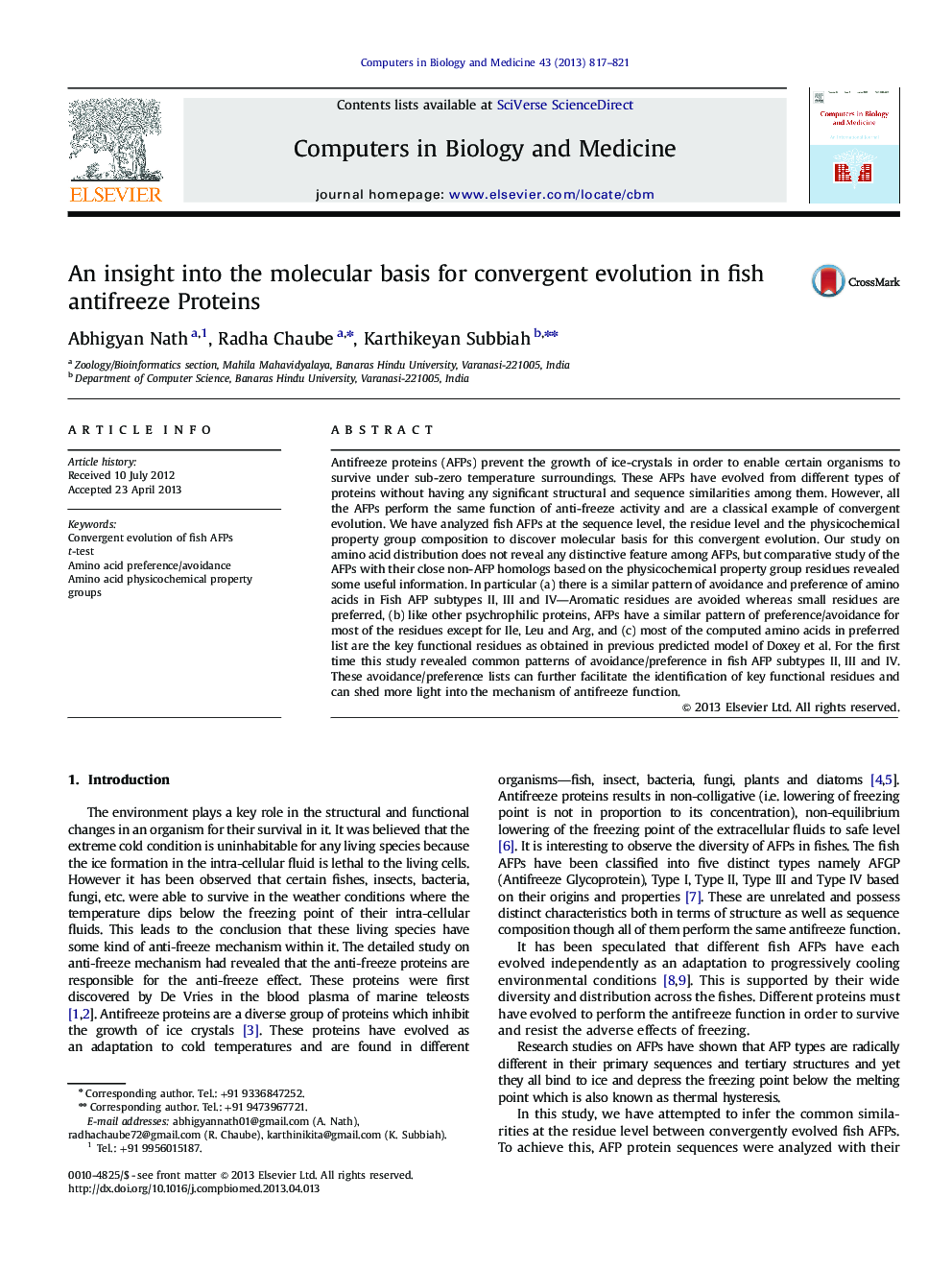| Article ID | Journal | Published Year | Pages | File Type |
|---|---|---|---|---|
| 10351499 | Computers in Biology and Medicine | 2013 | 5 Pages |
Abstract
Antifreeze proteins (AFPs) prevent the growth of ice-crystals in order to enable certain organisms to survive under sub-zero temperature surroundings. These AFPs have evolved from different types of proteins without having any significant structural and sequence similarities among them. However, all the AFPs perform the same function of anti-freeze activity and are a classical example of convergent evolution. We have analyzed fish AFPs at the sequence level, the residue level and the physicochemical property group composition to discover molecular basis for this convergent evolution. Our study on amino acid distribution does not reveal any distinctive feature among AFPs, but comparative study of the AFPs with their close non-AFP homologs based on the physicochemical property group residues revealed some useful information. In particular (a) there is a similar pattern of avoidance and preference of amino acids in Fish AFP subtypes II, III and IV-Aromatic residues are avoided whereas small residues are preferred, (b) like other psychrophilic proteins, AFPs have a similar pattern of preference/avoidance for most of the residues except for Ile, Leu and Arg, and (c) most of the computed amino acids in preferred list are the key functional residues as obtained in previous predicted model of Doxey et al. For the first time this study revealed common patterns of avoidance/preference in fish AFP subtypes II, III and IV. These avoidance/preference lists can further facilitate the identification of key functional residues and can shed more light into the mechanism of antifreeze function.
Keywords
Related Topics
Physical Sciences and Engineering
Computer Science
Computer Science Applications
Authors
Abhigyan Nath, Radha Chaube, Karthikeyan Subbiah,
